|
Exercise Name |
Target |
Description |
Visual |
|
Body Weight Squat |
quadriceps & gluteus |
Starting in standing position, squat
all the way down pointing both arms forward (1), return to
standing
position (2) |
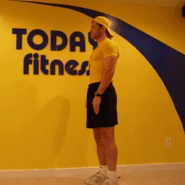 |
|
Calf Raises
(no weight) |
calves |
Position toes and balls of feet on calf block with arches and heels
extending off. Hold onto a stationary object for for balance.
Raise heels by extending ankles as high as possible. Lower heels by
bending ankles until calves are stretched. Repeat. |
 |
|
Swiss Ball Hip
Raise and Curl |
hamstrings |
With your heels on the stability ball,
raise your hips so that your body makes a straight line from your
knees to your shoulders. Maintaining this straight line,
curl your heels towards your butt, pause, and roll back out.
Lower your hips to the floor. Repeat. The advanced
version entails doing the same motion with one leg. |
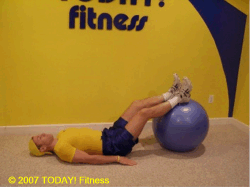 |
|
Alternating Lunge |
quadriceps & gluteus |
Starting in standing postion, take a
deep step, almost touching one knee (1), come back to starting
position (2), take a deep step with the other leg (3), back to
starting position (4). Keep your forward knee from going
past your toes on the step. |
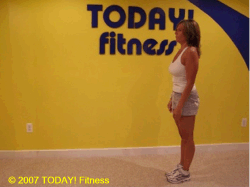 |
|
1 Legged Chair
Squat
(advanced) |
quadriceps, gluteus, hamstrings |
Starting position standing on one leg
on a chair or bench. Lower your other leg to the floor and barely
touch with your toes before pressing back up to the starting
position. Repeat for an entire set with one leg before switching
to the other leg. |
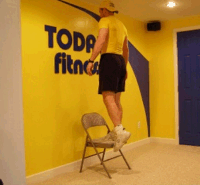 |
|
Step Up
(beginner) |
quadriceps, gluteus, hamstrings |
Preparation
Starting Position standing 1 foot to 18 inches away from a step (12-18
inches high).Execution
Step up with your right leg, then up with your left leg, then down with your
right leg, then down with your left leg. Up-up-down-down.
Alternate your "lead leg" every 5 repetitions. |
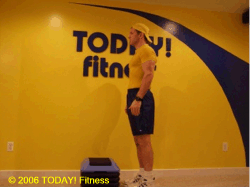 |
|
1 Leg Split Squat |
quadriceps & gluteus |
Starting in the up position, with your
back leg on a chair or bench. Working leg should be forward enough
so that your knee does not go past your toes in the down position.
Lower your non working knee towards the floor and then press back
up. Variations include adding weights to your hands for
added resistance, supporting your non-working leg on a stability
ball for more emphasis on core, or any combination of both.
When using the stability ball, start with the top of your foot on
the ball and roll the ball backwards on the downward motion of the
exercise. |
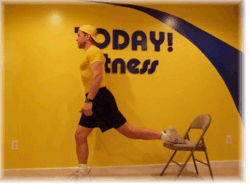 |
|
|
|
|
|
![]()